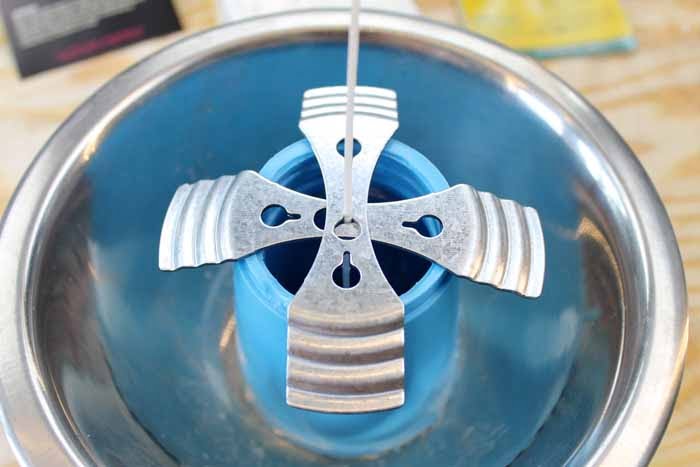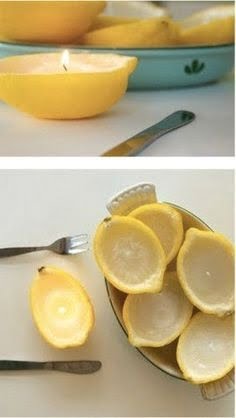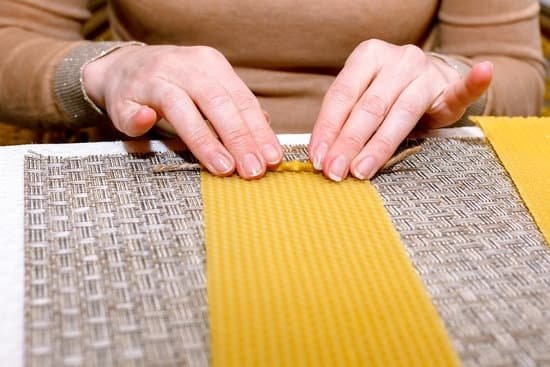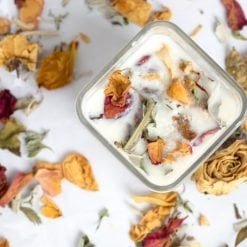Candle making has experienced a significant surge in popularity in recent years, as more and more people discover the joy and satisfaction of creating their own unique candles. This introduction will explore the reasons behind this growing trend and provide an overview of what is needed for candle making.
In today’s fast-paced world, many individuals are seeking ways to engage in creative activities that provide a sense of relaxation and mindfulness. Candle making offers a perfect outlet for this desire, allowing individuals to tap into their artistic side while also enjoying the calming effects of the candle-making process.
Additionally, there is a rising interest in environmentally-friendly and sustainable products. Commercially-produced candles often contain harsh chemicals and synthetic fragrances that can be harmful to both human health and the environment. By making their own candles, people have control over the materials they use and can opt for natural ingredients that are better for both themselves and the planet.
To embark on this exciting journey of candle making, it is important to gather the necessary tools and equipment. Whether you are a beginner or an experienced candle maker looking to improve your craft, having the right supplies is essential. This article will delve into the various essential tools needed for candle making, including molds, wicks, melting pots, thermometers, and more.
Join us as we dive into the fascinating world of candle making where creativity meets practicality.
Historical Background
Candle making has a rich history that dates back thousands of years. The art of creating candles has evolved and adapted over time, resulting in the wide variety of candles we have today. Exploring the historical background of candle making can provide insight into how this craft has developed and transformed throughout different civilizations.
One of the earliest known civilizations to use candles was Ancient Egypt. They used rushlights, which were made by soaking the pithy core of reeds in melted animal fat or tallow. These early methods were simple and functional, providing a source of light in their homes and temples.
As time went on, candle making techniques became more sophisticated. In ancient Rome, beeswax began to replace tallow as it burned clean and had a pleasant scent. Beeswax candles were highly valued and reserved for special occasions or religious ceremonies.
During the Middle Ages, candle making became an established craft. Chandlers, skilled artisans who specialized in candle making, appeared across Europe. They used molds made from metal or wood to create candles with consistent shapes.
The Industrial Revolution brought significant advancements to candle manufacturing in the 19th century. With the invention of machines that could mass-produce molded candles using paraffin wax, candles became more affordable and accessible to the general population.
Today, candle making is not only a practical skill but also a popular hobby and artistic expression. People have embraced various techniques like hand pouring, dipping, rolling, and sculpting to create unique and personalized candles.
By understanding the historical background of candle making, we can appreciate how this craft has evolved throughout centuries to become what it is today. Whether you are a beginner or an experienced candle maker, exploring these origins can inspire creativity and offer a deeper connection to this timeless art form.
Types of Candles
Candles have been used for centuries in various cultures and civilizations for religious, practical, and decorative purposes. Over time, candle making techniques and styles have evolved, leading to the creation of a wide range of candle varieties. In this section, we will explore some of the most popular types of candles available today.
One of the most common types of candles is the pillar candle. These candles are cylindrical in shape and can come in various heights and diameters. Pillar candles are versatile and can be used as stand-alone decorations or placed in decorative holders. They are often unscented, allowing them to be used in any setting without overpowering other scents.
Taper candles are another classic type of candle that many people are familiar with. These long, slender candles are traditionally used during formal occasions such as dinners or holiday celebrations. Taper candles require a specialized holder to keep them upright while they burn.
Floating candles add a touch of elegance to any occasion and are designed specifically to float on water. They come in various shapes like stars or flowers and create a beautiful ambiance when placed in bowls, ponds, or pools. Floating candles are often scented to enhance the atmosphere further.
Votive candles are small, usually round or square-shaped candles that can fit into votive holders. These versatile candles are commonly used for religious ceremonies and also make great additions to home decor arrangements or centerpieces.
Tealight candles have become increasingly popular due to their small size and versatility. These small circular candles come in metal or plastic cups and can fit into standard tealight holders. Tealights provide ambient lighting and can be easily combined with other decor items.
| Type | Description |
|---|---|
| Pillar Candles | Cylindrical shape; versatile decoration; unscented |
| Taper Candles | Long, slender shape; formal occasions; require a holder |
| Floating Candles | Designed to float on water; various shapes; scented |
| Votive Candles | Small, round or square shape; versatile decoration; common in religious ceremonies |
| Tealight Candles | Small, circular shape; fit into tealight holders; provide ambient lighting |
These are just a few examples of the diverse array of candles available today. From scented candles that fill the room with fragrance to decorative candles that add a touch of elegance to any space, there is a candle type for every occasion and personal preference. Experimenting with different candle varieties can help individuals find their favorites for specific atmospheres or events.
The Art of Candle Making
The art of candle making offers a wide range of creative possibilities, allowing individuals to unleash their imagination and create unique and personalized candles. By experimenting with different techniques, candle makers can produce candles that not only serve as a light source but also as decorative pieces that add beauty and ambience to any space.
One popular technique in candle making is the use of molds. Molds come in various shapes and sizes, such as pillars, votives, or even novelty designs like flowers or animals. These molds are filled with melted wax, which solidifies into the desired shape. Candle makers can choose to keep the molded candle plain or they can further embellish it with decorations like dried flowers, glitter, or colored wax drips.
Another technique that allows for artistic expression is hand-dipping. This method involves repeatedly dipping a wick into a pot of melted wax until the desired thickness is achieved.
Each dip results in a new layer of wax being added to the candle, creating a beautiful tapered effect. Hand-dipped candles offer an old-world charm and can be left in their natural form or finished with a variety of techniques such as carving, dipping in colored wax, or adding artistic accents with beads or ribbons.
For those looking to explore their artistic side even further, there are also techniques like marbling and layering. Marbling involves swirling different colored waxes together to achieve a unique pattern on the surface of the candle. Layering, on the other hand, involves pouring one layer of colored wax on top of another to create multi-colored and visually stunning candles.
Overall, there is no limit to the creative possibilities when it comes to candle making. Whether using molds, hand-dipping, marbling, or layering techniques – each approach offers its own unique outcomes. By experimenting with different methods and combining them with personal artistic flair – imagination truly becomes the only constraint in this art form.
Essential Tools and Equipment
Candle making requires a few essential tools and equipment to ensure a smooth and successful process. These tools not only aid in creating beautiful candles but also contribute to the overall safety of the candle maker. Here are some of the key tools and equipment needed for candle making:
- Heat Source: A heat source is crucial for melting wax and maintaining the temperature while pouring. The most common heat source used by candle makers is a double boiler, which consists of two pots, one placed inside the other. The inner pot holds the wax while the outer pot with water provides gentle and indirect heat.
- Thermometer: A thermometer is essential to monitor the temperature of the melted wax accurately. Maintaining the correct temperature is vital as it ensures proper adhesion of fragrance oils and helps avoid any potential safety hazards.
- Pouring Container: A container specifically designed for candle pouring is necessary to hold and pour melted wax into molds or containers. It should be heat-resistant to prevent any damage or accidents.
- Molds: Candle molds come in various shapes, sizes, and materials such as silicone, metal, or plastic. The choice of mold depends on personal preference and desired candle shape.
- Wick: Wicks are essential for a functional candle as they carry the fuel (wax) up to where it can be burned. Depending on the type of candle being made, different wick types, such as cotton wicks or wooden wicks, may be used.
| Tool/Equipment | Description |
|---|---|
| Heat Source | A double boiler or alternative heating method for melting wax. |
| Thermometer | To accurately monitor the temperature of the melted wax. |
| Pouring Container | A heat-resistant container for pouring melted wax into molds or containers. |
| Molds | Various shapes, sizes, and materials to create different candle shapes. |
| Wick | Carries the fuel (wax) up to where it can be burned in the candle. |
These are just a few examples of the essential tools and equipment needed for candle making. Depending on specific projects and techniques, additional tools such as wick holders, stirrers, scales, and scissors may also be required. It’s important to invest in quality tools and equipment to ensure safety and enhance your candle making experience.
Materials and Ingredients
When it comes to candle making, it is essential to have the right materials and ingredients to ensure that you create perfect candles. The quality of these components directly affects the overall outcome of your candles, from their fragrance and burn time to their appearance. In this section, we will explore the key materials and ingredients needed for candle making.
Wax
The main component of a candle is wax, which provides fuel for the flame. There are several types of wax commonly used in candle making, each with its own unique characteristics.
One popular wax choice is soy wax, which is made from soybean oil and known for its clean burning properties. Soy wax has a lower melting point compared to other waxes, resulting in longer burn times. It also has excellent scent throw, meaning it will release fragrance into the air while burning.
Another common wax option is paraffin wax, which is derived from petroleum. Paraffin wax is known for its versatility and ability to hold vibrant colors and fragrances well. It has a higher melting point than soy wax, making it suitable for creating pillar candles or those designed for outdoor use.
Beeswax is another natural wax option that offers a distinct sweet smell while burning. Known for its clean-burning properties and long burn times, beeswax candles are often pricier than those made with other waxes due to the cost of production.
Fragrance Oils
Adding fragrance oils to your candles can enhance their ambiance and offer a delightful sensory experience. These oils come in a wide range of scents, allowing you to create customized blends or replicate popular aromas already on the market.
When selecting fragrance oil, it’s important to choose ones specifically formulated for candle making as they are designed to withstand high temperatures without losing their scent. Some commonly used fragrance oils include lavender, vanilla, and citrus blends.
It’s worth noting that fragrance oils also come in different categories called “notes.” The top note is the first scent you smell when you light the candle, while the middle and base notes emerge as the candle burns. Understanding these notes can help you create a well-balanced fragrance.
Wicks
Wicks play a crucial role in candle making as they provide the pathway for the flame to burn steadily. Choosing the right wick will depend on factors such as the diameter of your candle, wax type, and desired burn time.
Cotton wicks are commonly used in candle making due to their affordability and availability. They come in various sizes to accommodate different candle diameters. Additionally, cotton wicks are known for providing a clean and stable burn.
For larger candles or those made with large-diameter containers, you may opt for braided or multiple-ply wicks that offer a stronger flame and more even burn. Alternatively, wooden wicks are gaining popularity as they provide a crackling sound reminiscent of a fireplace while burning.
To determine which wick is best for your specific project, it’s recommended to consult wick manufacturer guides or conduct small test batches before committing to a large production.
Safety Precautions
When it comes to candle making, prioritizing safety is essential to ensure a safe and enjoyable experience. Taking the necessary precautions can prevent accidents and potential hazards. In this section, we will explore some important safety measures that should be followed during the candle making process.
Proper Protective Gear
Before starting your candle making journey, it is crucial to equip yourself with the appropriate protective gear. This includes wearing heat-resistant gloves to protect your hands from hot wax and potential burns. Additionally, wearing long sleeves and closed-toe shoes can provide extra protection against any accidental spills or splatters.
Ventilation
Candle making often involves working with fragrances and dyes, which can release strong fumes. It is important to work in a well-ventilated area or have proper air circulation systems in place to prevent inhaling potentially harmful substances. Opening windows or using fans can help dissipate any lingering fumes.
Fire Safety
Fire safety is paramount when working with open flames during the candle making process. Keep a fire extinguisher nearby and make sure you know how to use it effectively. Always work on a sturdy surface that is heat resistant and away from flammable objects such as curtains or paper. Never leave lit candles unattended and ensure they are placed in stable holders.
Handling Hot Wax
As candles involve heating and melting wax, caution must be taken while handling hot wax. Use a double boiler or a dedicated melter specifically designed for melting wax instead of direct heat sources like stovetops or microwaves to reduce the risk of accidental fires or burns.
Cleanliness and Organization
Maintaining cleanliness and organization during candle making not only helps create an enjoyable workspace but also minimizes potential accidents. Keep your work area clutter-free by organizing your tools and materials. This will help prevent spills and knocks that can cause accidents.
Following these safety precautions will ensure that your candle making experience remains safe and enjoyable. It is always better to be proactive and prepared to prevent any accidents or hazards. Remember, prioritize safety every step of the way, from gathering the necessary supplies to the final lighting of your beautiful handmade candles.
Step-by-Step Guide
When it comes to candle making, the process can seem a bit daunting for beginners. However, with a step-by-step guide, anyone can create beautiful homemade candles in no time. This section will take you through the entire candle making process, from start to finish.
- Gathering Your Materials: The first step in making candles is gathering all the necessary materials and tools. This includes wax, wicks, fragrance oils, color dyes (if desired), a double boiler or melting pot, a thermometer, a stirring utensil, a scale for measuring ingredients, and any additional embellishments such as glitter or dried flowers.
- Preparing Your Workspace: Before diving into candle making, it’s important to set up your workspace properly. Lay down newspapers or a protective covering to catch any spills or drips. Make sure you have good ventilation to prevent inhaling any fumes from melting wax or fragrance oils.
- Melting the Wax: Begin by melting your chosen wax in a double boiler or melting pot over low heat. Keep an eye on the temperature using a thermometer and stir occasionally to ensure even melting. Different types of wax have different melting points, so be sure to follow the instructions specific to the type of wax you are using.
- Adding Fragrance and Color: Once the wax has melted completely, remove it from heat and add fragrance oils and color dyes if desired. It’s important to stir these additives thoroughly into the wax to ensure they are evenly distributed.
- Preparing the Containers: While your scented and colored wax cools slightly, prepare your candle containers by placing wicks at their centers. Use glue dots or hot glue to secure them in place if needed.
- Pouring the Wax: Slowly pour your melted wax into each prepared container until they are about ¾ full. Allow some room for expansion when burning your candles.
- Setting and Finishing Touches: Allow the wax to cool and solidify completely, which can take anywhere from a few hours to overnight depending on the size of your candles. Once cooled, trim the wicks to about ¼ inch and add any finishing touches such as ribbon or labels.
By following this step-by-step guide, even beginners can create their own homemade candles with ease. It’s a fun and rewarding process that allows for creativity and customization. With a bit of practice, you’ll soon be able to experiment with different scents, colors, and candle shapes to create truly unique creations.
Troubleshooting and Tips
Candle making can be a rewarding and enjoyable hobby, but it’s not without its challenges. Whether you’re a beginner or experienced candle maker, you may encounter common issues along the way. In this section, we will address these common challenges and provide expert advice to help troubleshoot problems and ensure successful candle making.
One of the most common challenges in candle making is achieving a smooth and even burn. Uneven burning can lead to wasted wax and tunneling, where the wax burns down the center of the candle, leaving unused wax along the sides. To prevent this, it’s important to use the right size wick for your candle.
A wick that is too small may not create enough heat for a complete melt pool, while a wick that is too large can cause excess soot and uneven burning. Experiment with different wick sizes until you find the perfect match for your desired burn time.
Another challenge in candle making is dealing with surface imperfections such as air bubbles, frosting, or sinkholes. Air bubbles can form when pouring hot wax into containers, while frosting is caused by temperature fluctuations during cooling. Sinkholes occur when the wax pulls away from the container as it cools.
To minimize these imperfections, it’s crucial to pour your wax at the correct temperature – usually around 180-185°F (82-85°C). Avoid stirring too vigorously as it can introduce air bubbles into the mixture. Additionally, placing your candles in a cool room while they cool down gradually can help reduce frosting.
Lastly, scent throw is an essential aspect of creating scented candles. Scent throw refers to how well a fragrance fills a room when the candle is lit. If you find that your scented candles aren’t emitting enough fragrance or are overpowering, there are several factors to consider.
The type and amount of fragrance oil used, the quality of the oil, and the wax’s ability to hold fragrance can all impact scent throw. Experiment with different fragrance oils and proportions to find the right balance. It’s also important to let your candles cure for at least a week before testing their scent throw as this allows the fragrance to blend with the wax.
By addressing these common challenges and following expert advice, you’ll be well-equipped to overcome any obstacles in your candle making journey. Remember that practice makes perfect, so don’t be discouraged if your first few attempts don’t turn out exactly as expected. With time and experience, you’ll develop your own techniques and troubleshoot like a pro.
Candle Making Communities and Resources
In today’s article, we have delved into the world of candle making, exploring its history, different types of candles, techniques, essential tools and equipment, materials and ingredients, safety precautions, step-by-step guide for beginners, troubleshooting tips, and more. As we conclude this article, let us now take a closer look at the vibrant candle making communities and resources that one can join to further enhance their passion for this art form.
One of the most rewarding aspects of candle making is the sense of community that comes with it. There are numerous online communities where candle makers from all around the world come together to share knowledge, swap ideas, and support each other in their craft. These communities often offer exclusive insights into new techniques or trends in candle making. They provide a platform for enthusiasts to connect with experienced artisans who can offer guidance and advice.
Additionally, joining a candle making community grants you access to a wide range of resources that can further broaden your knowledge and skills. Many websites and forums specialize in providing tutorials, patterns, and expert tips on various aspects of candle making. From sourcing high-quality materials to troubleshooting common issues faced by beginners, these resources can be invaluable in ensuring your success as a candle maker.
Whether you are a beginner or an experienced artisan looking to expand your knowledge and network within the industry, joining a thriving candle making community is highly recommended. By connecting with fellow enthusiasts and accessing valuable resources through online platforms or local groups/classes., you will not only learn new techniques but also find inspiration from like-minded individuals who share your passion for creating beautiful candles.
In conclusion, embracing the thriving candle making community allows individuals to fully immerse themselves in this creative pursuit. By actively participating in these communities and utilizing the available resources at hand., aspiring candle makers can build upon their skills while supporting others within the community. So why not take that next step and join the vibrant online candle making communities or seek out local groups/classes in your area? The possibilities are endless, and the benefits are immeasurable.
Frequently Asked Questions
What items are needed for candle making?
Candle making requires a few essential items to get started. Firstly, you will need wax, which is the main ingredient for making candles. There are various types of wax available such as soy wax, beeswax, and paraffin wax, each with its own unique characteristics. Additionally, you will need wicks that will be placed in the center of the candles and provide a pathway for the melted wax to fuel the flame.
Another essential item is fragrance oil or essential oils, which add scent to the candles and enhance their appeal. Color dyes can also be used to give the candles vibrant hues if desired. Lastly, you will need containers or molds to shape and hold the melted wax as it solidifies into a candle.
What do you need to start a candle business material list?
To start a candle business, besides the necessary materials mentioned, there are additional items needed to establish your venture successfully. First and foremost, you will require packaging materials such as boxes or bags to safely store and deliver your finished products. Labels or tags are also crucial for branding purposes; they provide information about your candle’s scent, ingredients, and ensure compliance with any regulatory requirements.
In terms of tools, you’ll need a double boiler or melting pot for melting the wax evenly without direct heat exposure. A thermometer helps monitor temperatures precisely during different stages of candle making while a scale ensures accurate measurement of ingredients like wax and fragrance oils.
What are the start up costs for candle making?
The start-up costs associated with candle making can vary depending on several factors including scale of production and desired production capacity. Key cost components include raw materials like wax, wicks, fragrance oils or essential oils, color dyes, containers or molds since they form the core ingredients required for candle making.
Moreover, equipment costs such as melting pots/double boilers, thermometers for temperature control along with scales add to start-up expenses. Packaging materials including boxes or bags to house the finished products must also be factored in when determining costs.

Welcome to my candle making blog! In this blog, I will be sharing my tips and tricks for making candles. I will also be sharing some of my favorite recipes.





